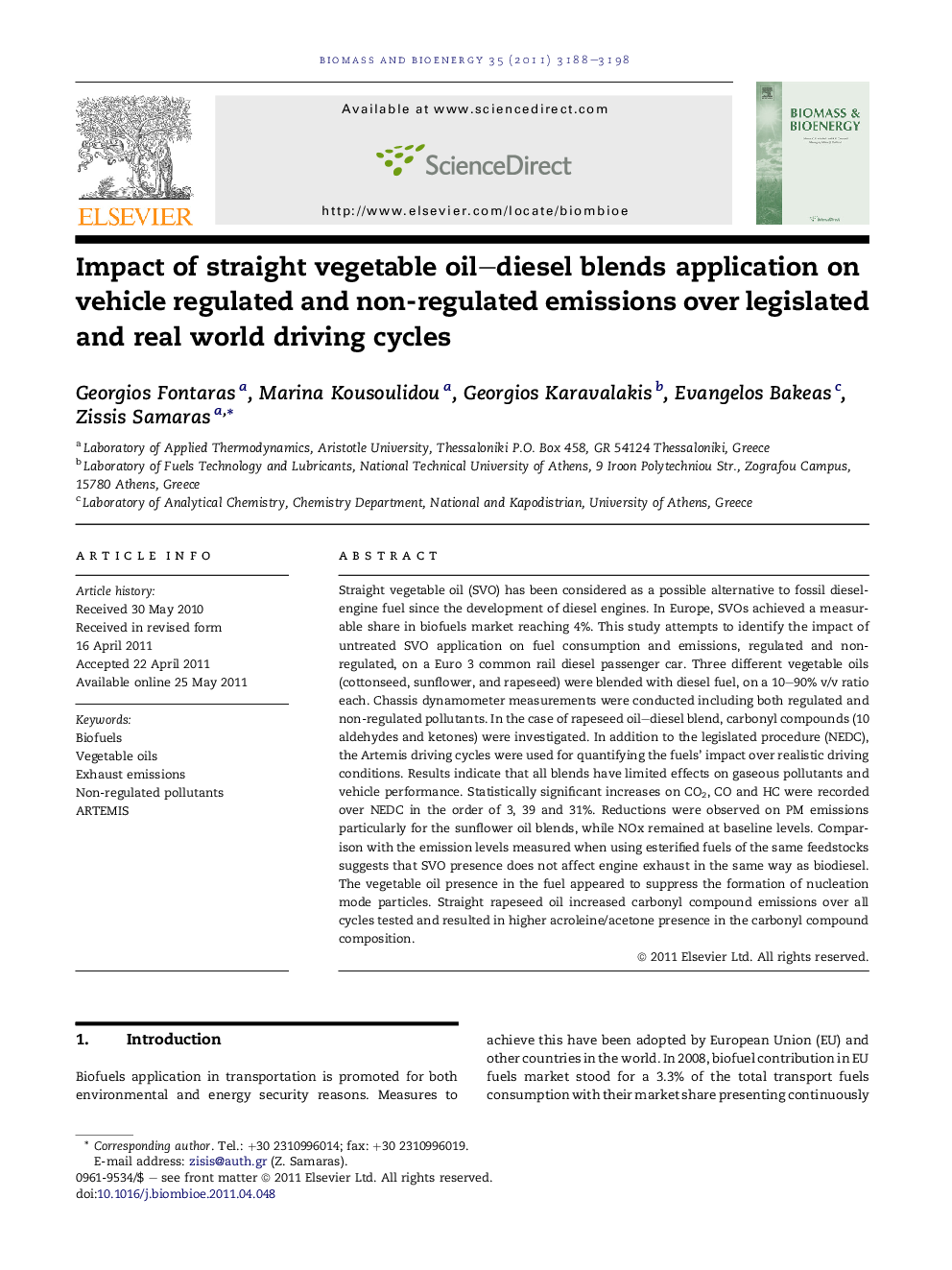| Article ID | Journal | Published Year | Pages | File Type |
|---|---|---|---|---|
| 677910 | Biomass and Bioenergy | 2011 | 11 Pages |
Straight vegetable oil (SVO) has been considered as a possible alternative to fossil diesel-engine fuel since the development of diesel engines. In Europe, SVOs achieved a measurable share in biofuels market reaching 4%. This study attempts to identify the impact of untreated SVO application on fuel consumption and emissions, regulated and non-regulated, on a Euro 3 common rail diesel passenger car. Three different vegetable oils (cottonseed, sunflower, and rapeseed) were blended with diesel fuel, on a 10–90% v/v ratio each. Chassis dynamometer measurements were conducted including both regulated and non-regulated pollutants. In the case of rapeseed oil–diesel blend, carbonyl compounds (10 aldehydes and ketones) were investigated. In addition to the legislated procedure (NEDC), the Artemis driving cycles were used for quantifying the fuels’ impact over realistic driving conditions. Results indicate that all blends have limited effects on gaseous pollutants and vehicle performance. Statistically significant increases on CO2, CO and HC were recorded over NEDC in the order of 3, 39 and 31%. Reductions were observed on PM emissions particularly for the sunflower oil blends, while NOx remained at baseline levels. Comparison with the emission levels measured when using esterified fuels of the same feedstocks suggests that SVO presence does not affect engine exhaust in the same way as biodiesel. The vegetable oil presence in the fuel appeared to suppress the formation of nucleation mode particles. Straight rapeseed oil increased carbonyl compound emissions over all cycles tested and resulted in higher acroleine/acetone presence in the carbonyl compound composition.
► Three different straight vegetable oils at 10% blends with automotive diesel were tested on a passenger car. ► No important impact on the emissions of regulated pollutants was found. ► Increase of carbonyl compounds was observed and should be further examined to avoid negative side effects on air quality.
